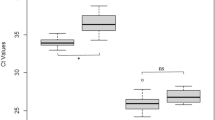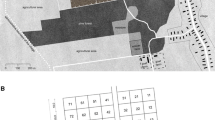Abstract
The vectors of arthropod-borne viruses (arboviruses) become infected by feeding on the viraemic blood of an infected animal. This theory is based on transmission studies involving artificial infection of vertebrate hosts by syringe inoculation. To reproduce natural conditions of virus transmission, infected and uninfected vectors (ticks) of tick-borne encephalitis virus, the most important arbovirus in Europe, were allowed to feed together on uninfected wild vertebrate hosts. The greatest numbers of infected ticks were obtained from susceptible host species that had undetectable or very low levels of viraemia. The results suggest that ‘nonviremic transmission’ is an important mechanism for the survival of certain arboviruses in nature.
Similar content being viewed by others
References
Karabatsos, N., in: International Catalogue of Arboviruses Including Certain Other Viruses of Vertebrates. Publication of the American Society of Tropical Medicine and Hygiene, San Antonio, Texas, 1985.
World Health Organization, Arthropod-borne and rodentborne viral diseases. WHO Technical Report, No. 719, 1985.
Jones, L. D., Davies, C. R., Steele, G. M., and Nuttall, P. A., Science237 (1987) 775.
Labuda, M., Jones, L. D., Williams, T., Danielova, V., and Nuttall, P. A., J. med. Ent.30 (1993) 295.
World Health Organization, Tick-borne encephalitis and haemorrhagic fever with renal syndrome in Europe WHO EURO Reports and Studies 104, 1986.
Cerny, V., Folia parasit.22 (1976) 271.
Radda, A., Hofmann, H., and Pretzmann, G., Acta virol. Prague13 (1969) 74.
Grešiková, M., and Calisher, C. H., in: The Arboviruses: Epidemiology and Ecology, vol IV, p. 177. Ed. T. P. Monath. CRC Press, Inc., Boca Raton, Florida 1988.
Málková, D., Roz. Česk. Akad. Věd.79 (1969) 1.
Aitkin, M., Anderson, D., Francis, B., and Hinde, J., Statistical Modelling in GLIM. Oxford Scientific Publications. Oxford 1989.
Kaufman, W. R., Parasit. Today5 (1989) 47.
Randolph, S. E., Parasitology79 (1979) 141, and S. E. Randolph, pers. com.
Titus, R. G., and Ribeiro, J. M. C., Science239 (1988) 1306.
Samuelson, J., Lerner, E., Tesh, R., and Titus, R., J. exp. Med.173 (1991) 49.
Titus, R. G., and Ribeiro, J. M. C., Parasit. Today6 (1990) 157.
Jones, L. D., Kaufman, W. R., and Nuttall, P. A., Experientia48 (1992) 779.
Labuda, M., Jones, L. D., Williams, T., and Nuttall, P. A., Med. vet. Ent.7 (1993) 193.
Nuttall, P. A., and Jones, L. D., in: Modern Acarology vol. 2, p. 3. Eds F. Dusbábek and V. Bukva. SPB Academic Publishing bv, The Hague 1991.
Jones, L. D., Hodgson, E., Williams, T., Higgs, S., and Nuttall, P. A., Med. vet. Ent.6 (1992) 261.
Author information
Authors and Affiliations
Rights and permissions
About this article
Cite this article
Labuda, M., Nuttall, P.A., Kožuch, O. et al. Non-viraemic transmission of tick-borne encephalitis virus: a mechanism for arbovirus survival in nature. Experientia 49, 802–805 (1993). https://doi.org/10.1007/BF01923553
Received:
Accepted:
Published:
Issue Date:
DOI: https://doi.org/10.1007/BF01923553




